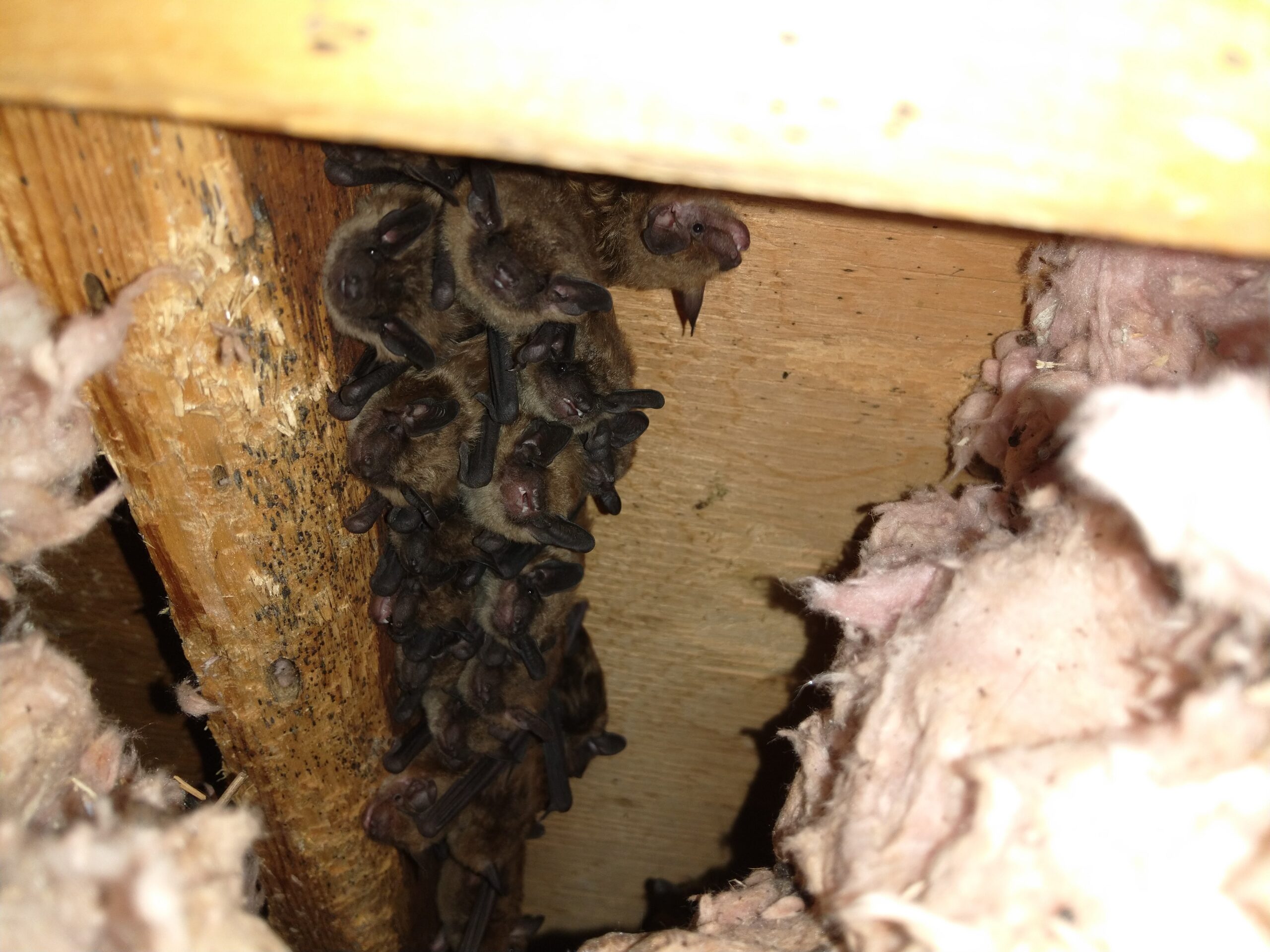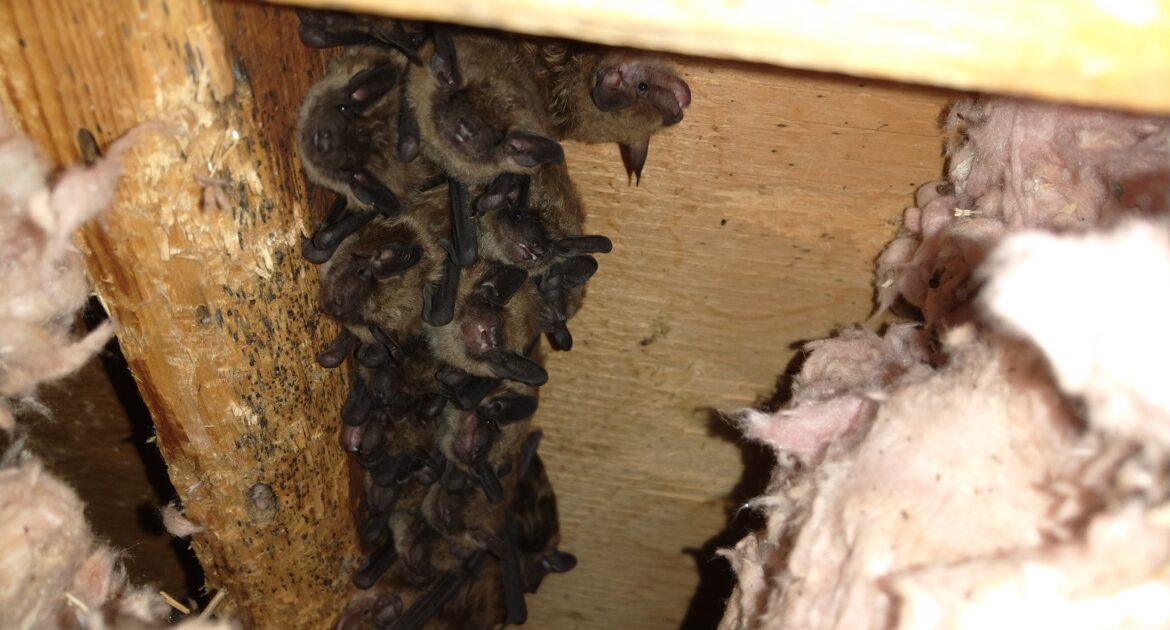There are 12 different species of bats in Wisconsin and Illinois. In addition to being the only mammal that can fly, bats actually can see and have pretty good night vision. Some bat species migrate in the fall and return in the spring. Others spend the winter hibernating.
Bat species that hibernate are most likely to cause problems for homeowners. Bats need consistent temperatures for their hibernation roosts, and warm attics typically fit the bill. If bats roost in your attic during the winter, you are likely to need bat removal in the spring.
Why Bat Removal Is Dangerous if Not Left to the Professionals
Bats are not the bloodthirsty monsters that popular culture often portrays them to be. Nevertheless, bats and humans do not always understand each other. Therefore, when the two species come into contact with one another, it can be dangerous for both.
Getting rid of bats should be a priority if you find evidence that they are roosting in your home. For the safety of both bats and humans, only professionals should attempt bat removal.
The real threat that bats pose to humans is the transmission of dangerous diseases. Bats are what are known as wildlife reservoirs for bacteria and viruses. In other words, bats can carry many diseases without showing symptoms themselves. Some of these diseases are zoonotic, meaning that they can pass from animals to humans.
Rarely, bats may spread these diseases by biting, but more often, humans become exposed to pathogens indirectly through bat excrement. Here are three examples of zoonotic diseases that bats can pass to humans, whether directly or indirectly.
1. Rabies
Rabies is a virus that affects the nervous system. It spreads when a bodily fluid, such as saliva, from an infected animal, gets into the bloodstream of an uninfected animal or human. Rabies is almost always fatal. There is no cure, but it is preventable with a vaccine.
People who live in areas where rabies is common may receive routine rabies vaccinations. Where rabies infections are rare, people usually only receive vaccinations after probable exposure. It takes weeks for the rabies virus to incubate, and vaccinations are highly effective at preventing infection if received before symptoms emerge.
Bats are one of the most common wildlife carriers of rabies and one of the animals most likely to spread it to humans. Given the opportunity, bats prefer to steer clear of humans but may bite in self-defense if handled. It is not common for bats to attack humans. There are only three bat species that feed on blood, and none of them live in Milwaukee.
2. Leptospirosis
Leptospirosis is a bacterial infection that spreads through contact with bat urine. It can cause muscle pain, nausea, fever, and headache if the bacteria enter the body through the eyes or broken skin. Leptospirosis is treatable with antibiotics but can cause serious and possibly fatal complications if left untreated.
3. Histoplasmosis
Histoplasmosis is caused by a fungus found in bat droppings. If inhaled, fungal spores can cause an infection of the lungs. While it is rare for infected people to show symptoms, people with weakened immune systems are at greater risk. Chronic illness can be a complication of histoplasmosis.
How Bats Are Beneficial
While contact between humans and bats can be hazardous for both species, bats help humans and the environment far more than they harm. For example, Milwaukee bats feed on insects, especially flying insects, such as moths and mosquitoes. Many of these insect pests destroy garden vegetables and food crops. A single bat may eat hundreds of insects per night. Because of bats, people who grow food can use less pesticide.
Bats have an important role to play in the ecosystem. Many species are pollinators, meaning that they help plants to reproduce by carrying pollen from flower to flower. Food crops that rely on bats for pollination include the following:
- Bananas
- Mangoes
- Cocoa beans
- Guava
Bats also pollinate agave plants, the source of tequila and several natural sweeteners, and eucalyptus, which has medicinal properties. Admittedly, none of these plants live in Milwaukee, but people all across Wisconsin and the United States benefit from products derived from these crops.
Why Harming Bats Is Against the Law
Bat populations are in decline around the world. Several species are endangered or threatened. Climate change and habitat loss are factors that contribute to declining bat populations, but one of the most significant reasons is white-nose syndrome, a fungal infection that is fatal to bats.
Bats that spend the winter hibernating together in close physical proximity are most susceptible to white-nose syndrome. These are also the bat species most likely to take shelter in your house. Because bats are so important to the ecosystem, some laws make it illegal to harm them while removing them from your house. While an internet search may provide you with information on how to get rid of bats in your house yourself, the information you find may not be compliant with the laws that are currently in place to protect bats.
Why You Should Call Skedaddle for Humane Bat Removal
Not only is it illegal to harm bats directly when removing them from your home, but you are also not allowed to harm them indirectly. Female bats cannot carry their babies with them when they fly away from the house. Since bat babies rely on their mothers for survival, removal cannot take place until the young bats can fly and find food on their own.
It is also illegal to disturb bats while they are hibernating. Their food sources are not available in the winter, so if awakened early, they would most likely starve to death.
Skedaddle has been in the wildlife and pest removal business for approximately 30 years and has accumulated more than enough experience to tackle every single wildlife infestation problem you can think of. Not only that, but our technicians have received thorough training in the laws protecting bats and how to comply with them. The company’s proven three-step process offers complete protection and proofing for your residence and includes three phases:
- Assess & Remove
- Clear & Clean
- Prevent & Protect
We clean bat excrement safely and thoroughly to protect your family from exposure, and we prevent further incursion by permanently sealing all entry points that bats could use to get into your home. Rest assured that Skedaddle Humane Wildlife Control is the company to help you with bat removal from your Milwaukee home. Contact Skedaddle today and ensure that your home is bat-free for years to come.




